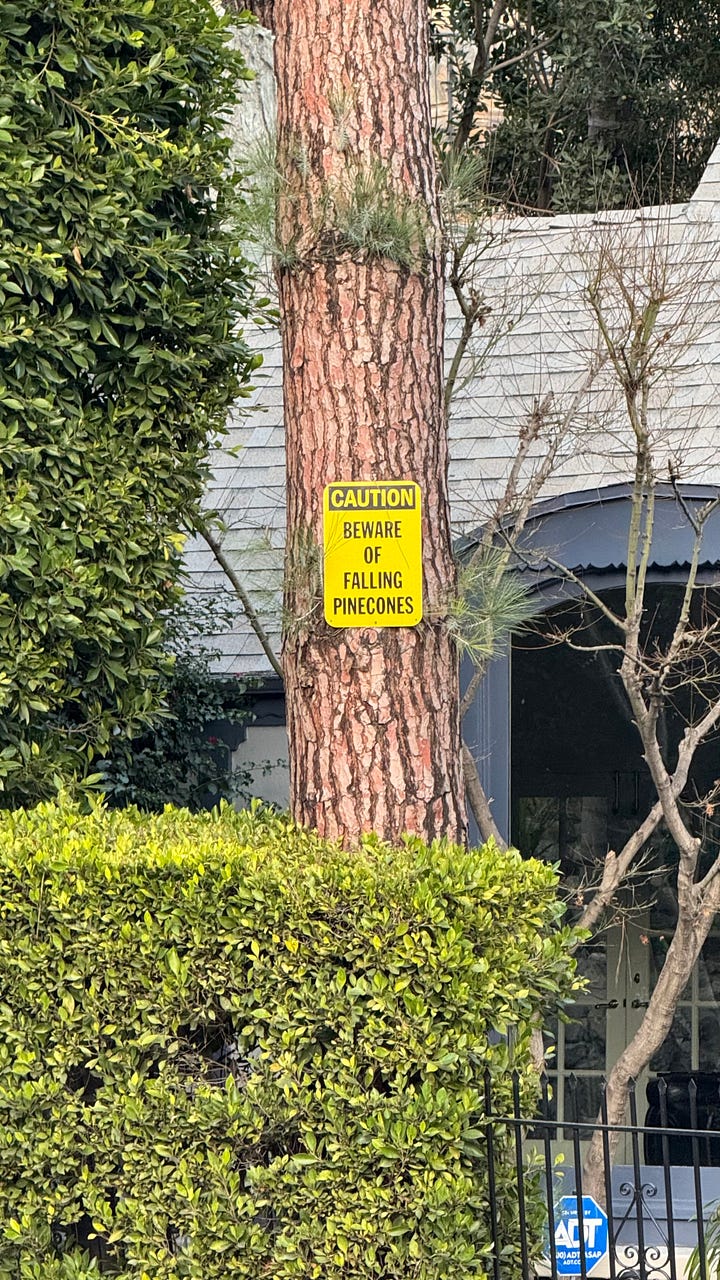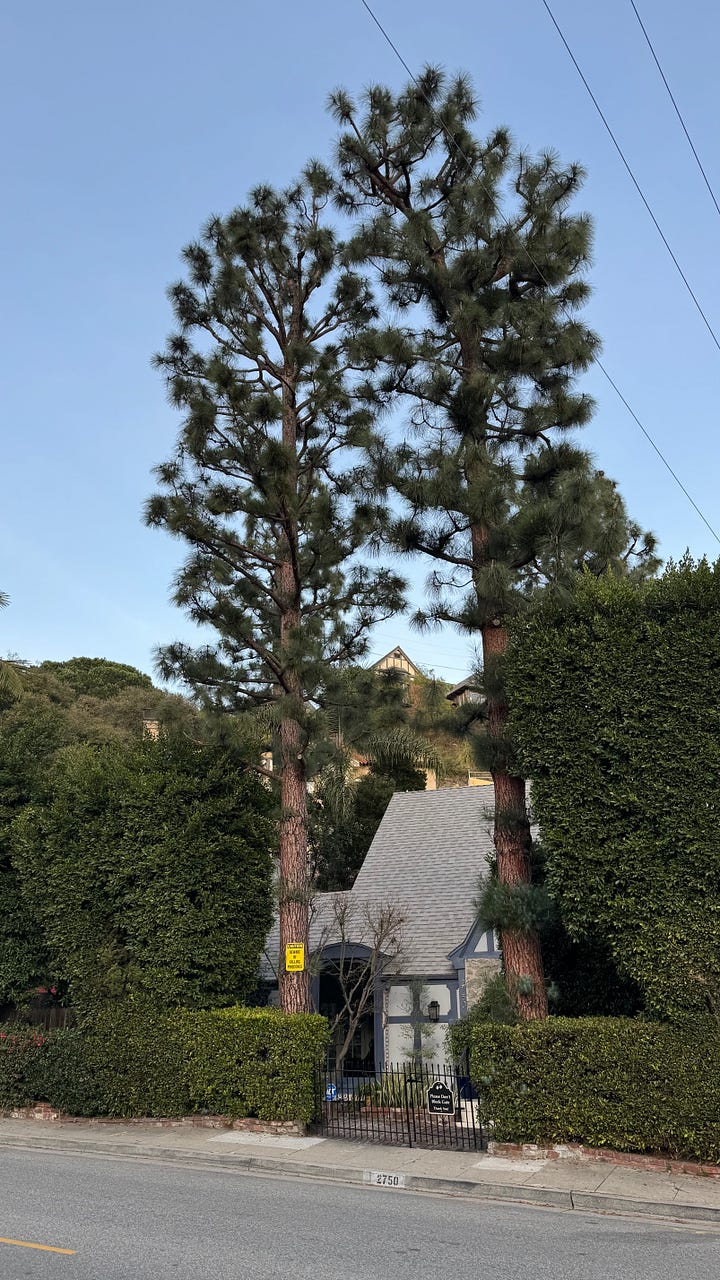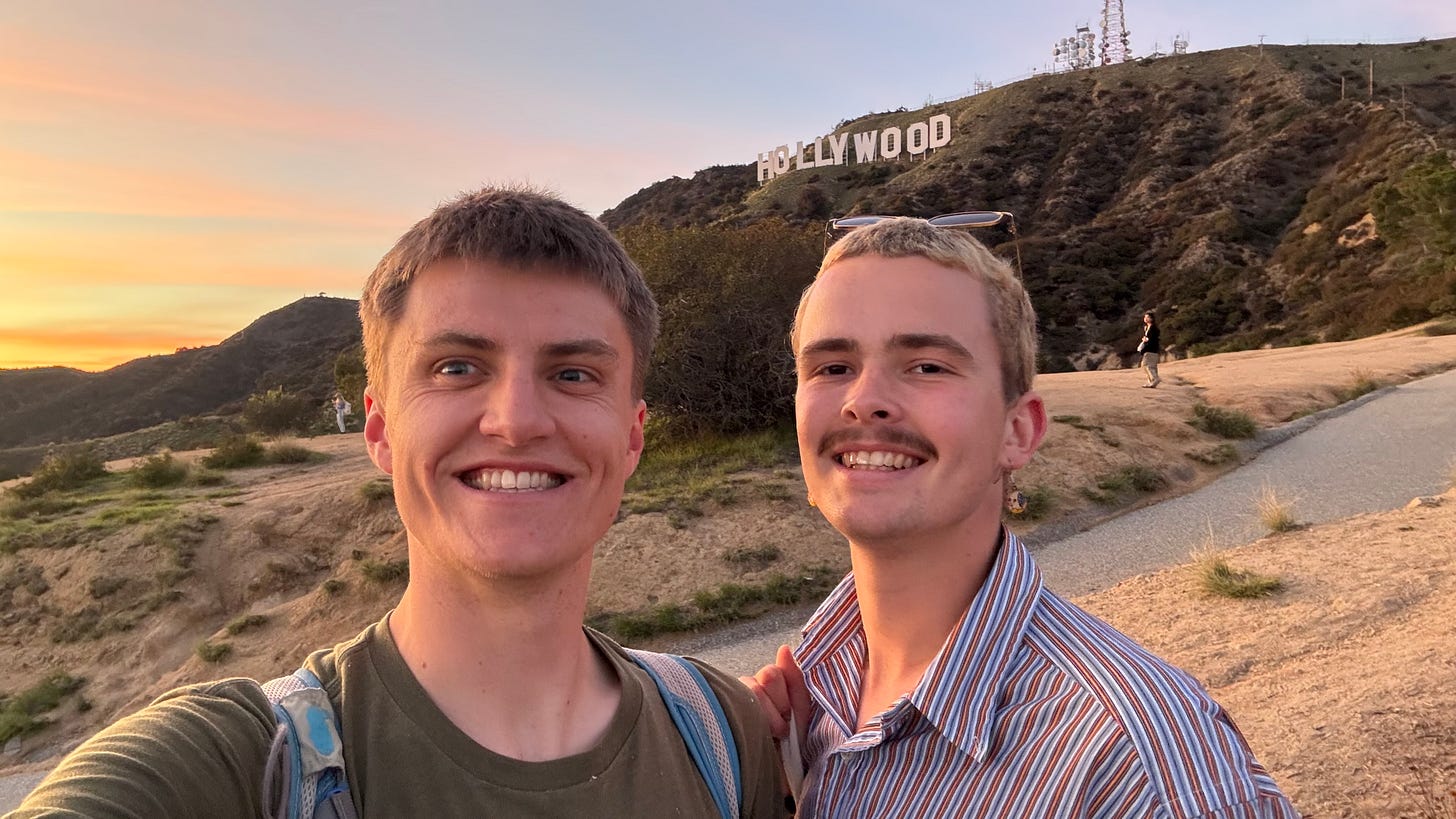Examining the secretary problem
When should you explore, and when should you optimize?
Yesterday, I had a lovely day out with my roommate Finlay — we went to a museum in WeHo, then hiked up to the Hollywood Sign from Sunset Boulevard. We caught the sunset from the top of Mulholland Drive, and had the most delicious brie cheese and crackers sitting directly above the Hollywood Sign as the lights turned on in LA.
My favorite part about my many excursions with Finlay is the many conversations we have while exploring, and yesterday was no different. We chatted and discussed many a thing on our way up to the top of the mountain, and it was a tremendous time through and through.
And it was during one of these chats that I pinpointed a very interesting phenomenon I’d been experiencing recently — that of the secretary problem — and one I wanted to share with you here.
The secretary problem is a famous math problem that deals with optimization and decision-making. I first heard about it from my dad, and it goes something like this:
Imagine an administrator who wants to hire the best secretary out of n rankable applicants for a position. The applicants are interviewed one by one in random order. A decision about each particular applicant is to be made immediately after the interview. Once rejected, an applicant cannot be recalled. During the interview, the administrator gains information sufficient to rank the applicant among all applicants interviewed so far, but is unaware of the quality of yet unseen applicants. (so the interviewer can tell how strong an applicant is based only on the strength of previous applicants they interviewed)
The question is about the optimal strategy (stopping rule) to maximize the probability of selecting the best applicant. If the decision can be deferred to the end, this can be solved by the simple maximum selection algorithm of tracking the running maximum (and who achieved it), and selecting the overall maximum at the end. The difficulty is that the decision must be made immediately.
Secretary problem, Wikipedia
Long story short, you need to pick the best applicant out of a large group, but the catch is that you don’t know how strong everyone in that group is.
Ultimately, the secretary problem boils down to the predicament that if you pick an applicant too early, you miss out on all the other, potentially better, applicants later on. But if you wait too long, you may have incorrectly rejected all the best applicants earlier and can now never go back.
Fortunately for us, there is a solution! The secretary problem is a solved one:
The optimal stopping rule prescribes always rejecting the first ∼n/e (where n is the number of applicants and e is Euler’s number, roughly 2.718) applicants that are interviewed, and then stopping at the first applicant who is better than every applicant interviewed so far (or continuing to the last applicant if this never occurs)
Secretary problem, Wikipedia
For the layperson, that means that you should spend roughly the first 1/3 of your time exploring and establishing a baseline, and then pick the first thing that is better than that baseline you’ve set. When you do this, you optimize your chances of finding the best option, and always find a great one regardless.
What’s so good about the secretary problem is that it’s not just a math problem, but a great strategy for finding the best things to do with our time. It tells us to spend some time exploring and seeing what’s out there, before eventually committing to something that we enjoy or value based on the baseline we’ve set for ourselves.
This is very useful — here are a few college student examples:
Explore a bunch of different clubs before committing more time to one or two (and maybe even serving in an officer position)
Go on a bunch of different dates to find out what you value in a partner, then commit
Spend a lot of time at different social events and parties to meet new people, and then mostly hang out with your close friends once you find them
Try out different restaurants around town, then mostly go to the ones you like most
Of course, we always want to keep exploring somewhat (who knows what great things you can find!), but once we find what we enjoy, we should spend most of our time on those things.
And this is exactly what I realized was happening to me while hiking with Finlay: I had already set my baseline of friends, and would much rather spend my last few weeks at UCLA with people I knew well than go out and meet more people. Since I’m graduating (so!) soon, I prioritize spending time with the close friends I already have rather than making new ones.
The subconscious calculation is that in my (very) limited time left, I’m much better off with those I already know than investing in new friendships. On the other hand, when I first started at UCLA and didn’t know anyone, there was much more of a focus on going out and meeting people, since there was no baseline there at all. Similarly, once I graduate and go on my month-long trip around the British Isles, I’ll be doing a lot more exploration rather than optimizing since I’ll be traveling and not knowing anyone.
Remember to keep exploring, and enjoy the things that you find. Spend ~1/3 of your time on exploring and ~2/3 on optimizing and deepening — let the secretary problem strike again!
Best,
Dennis :)
Dennis’s Picks:
I read this wonderful article yesterday, 40 Thoughts on Turning 40, full of great stories and life advice. Highly recommend!
On my hike yesterday with Finlay, I saw this funny sign warning passers-by of falling pinecones. lol




